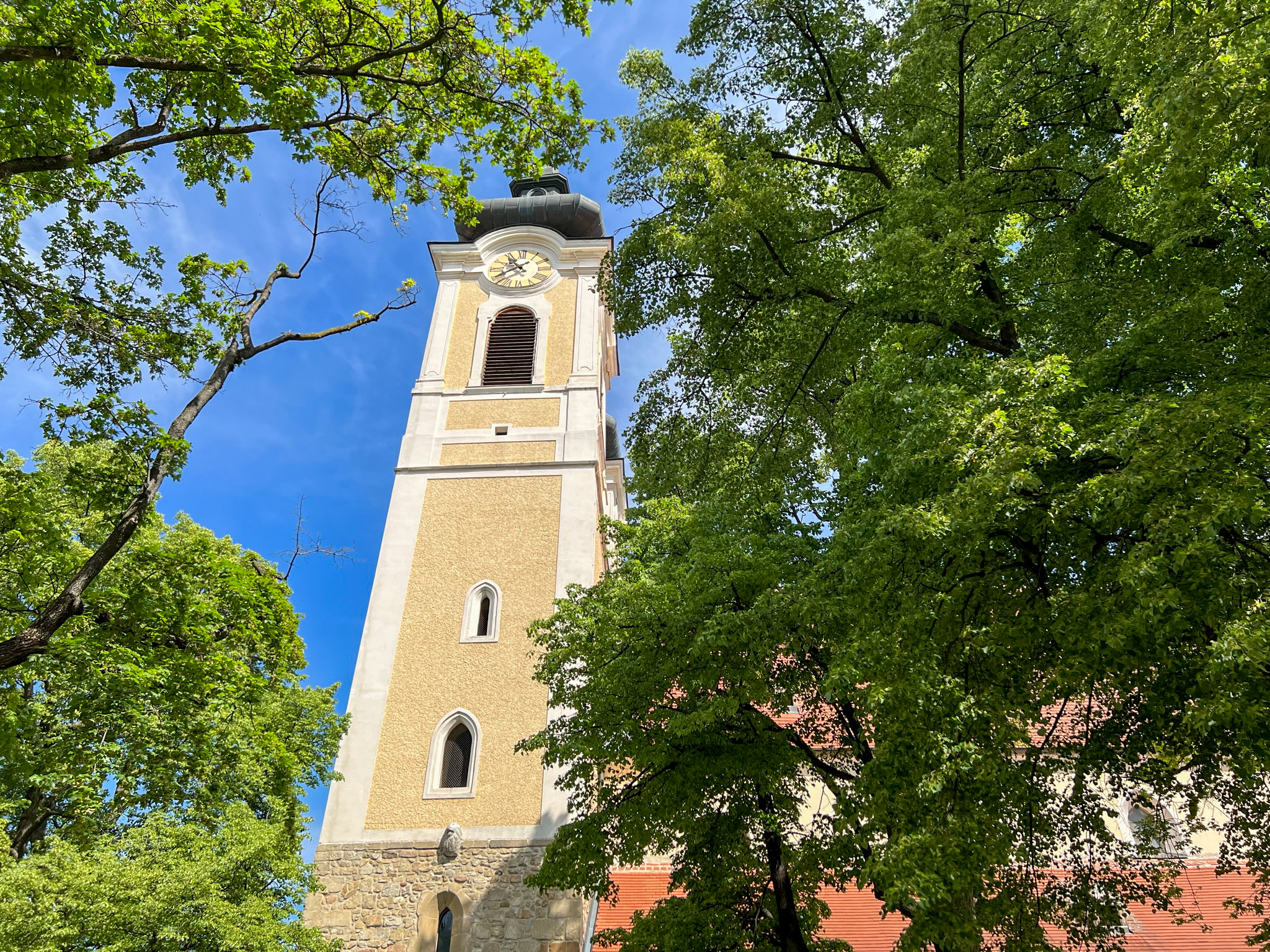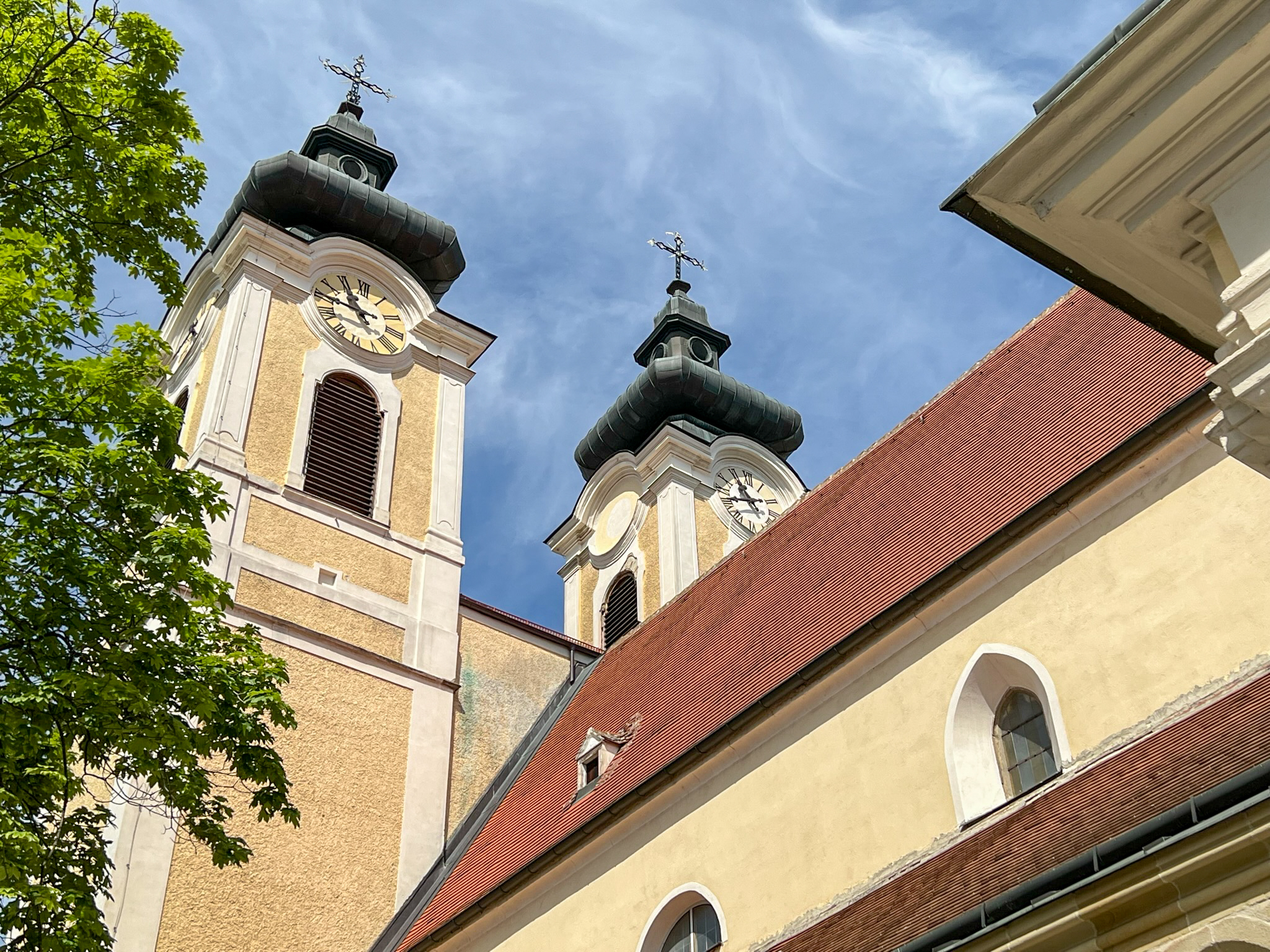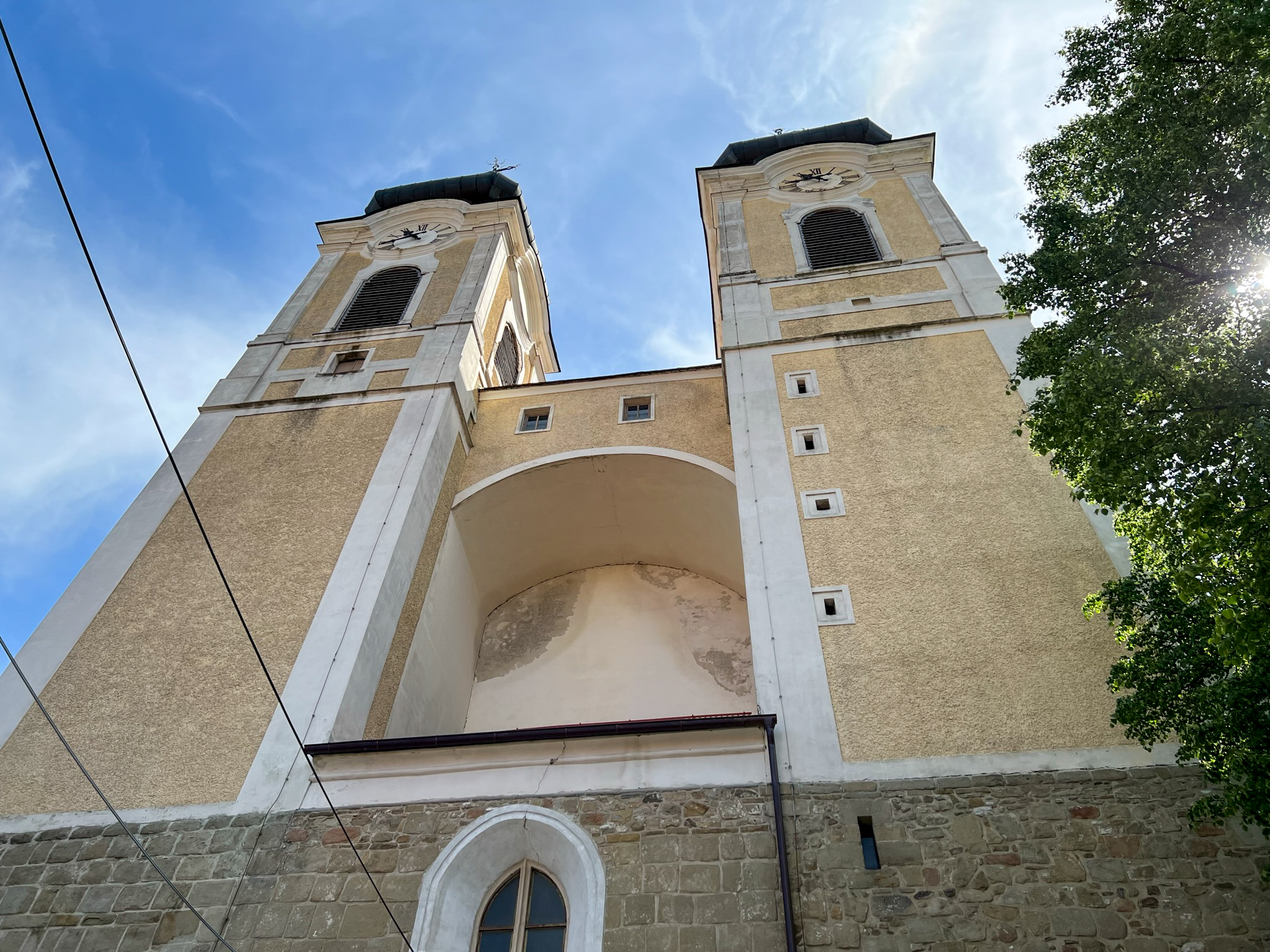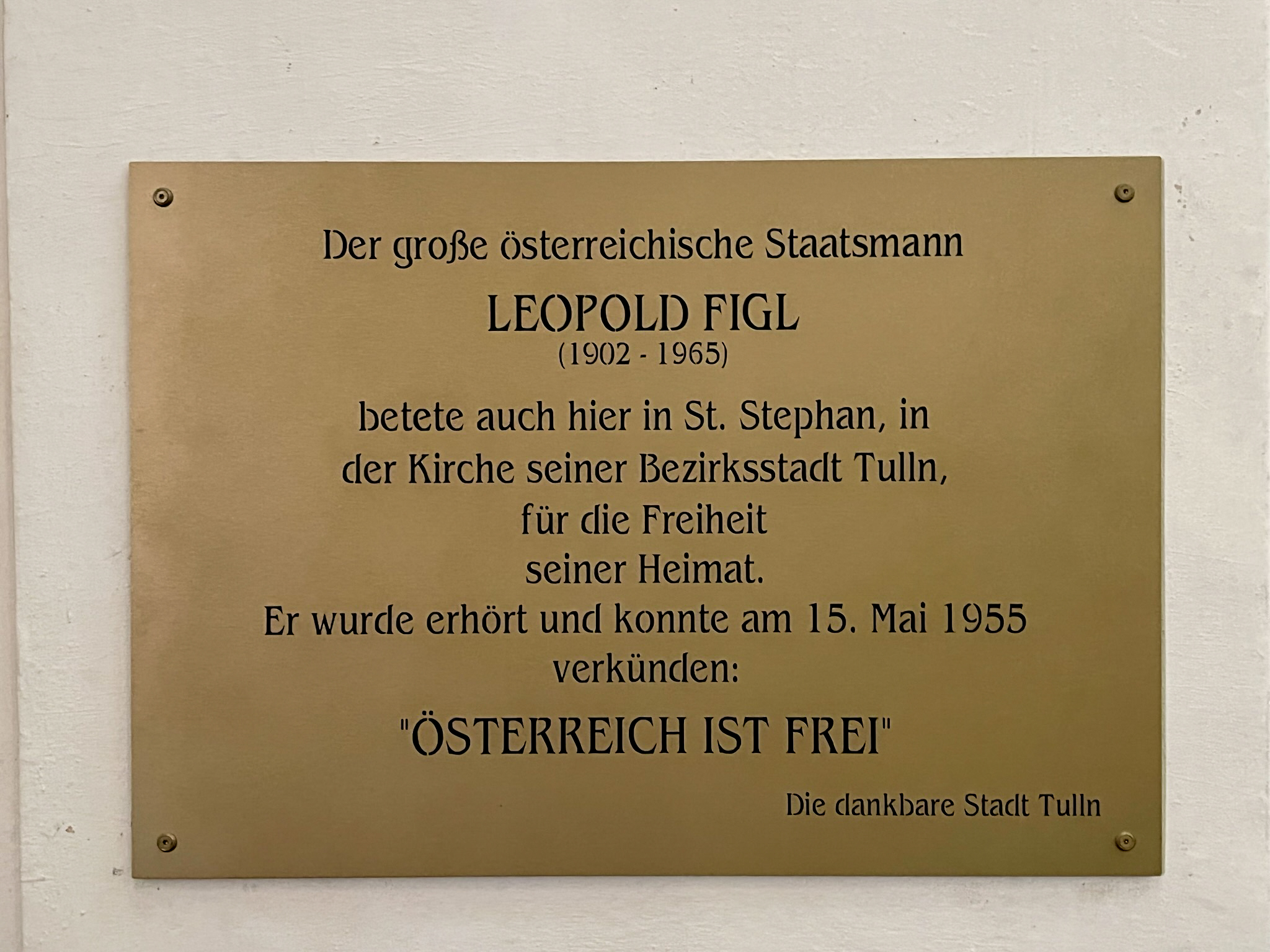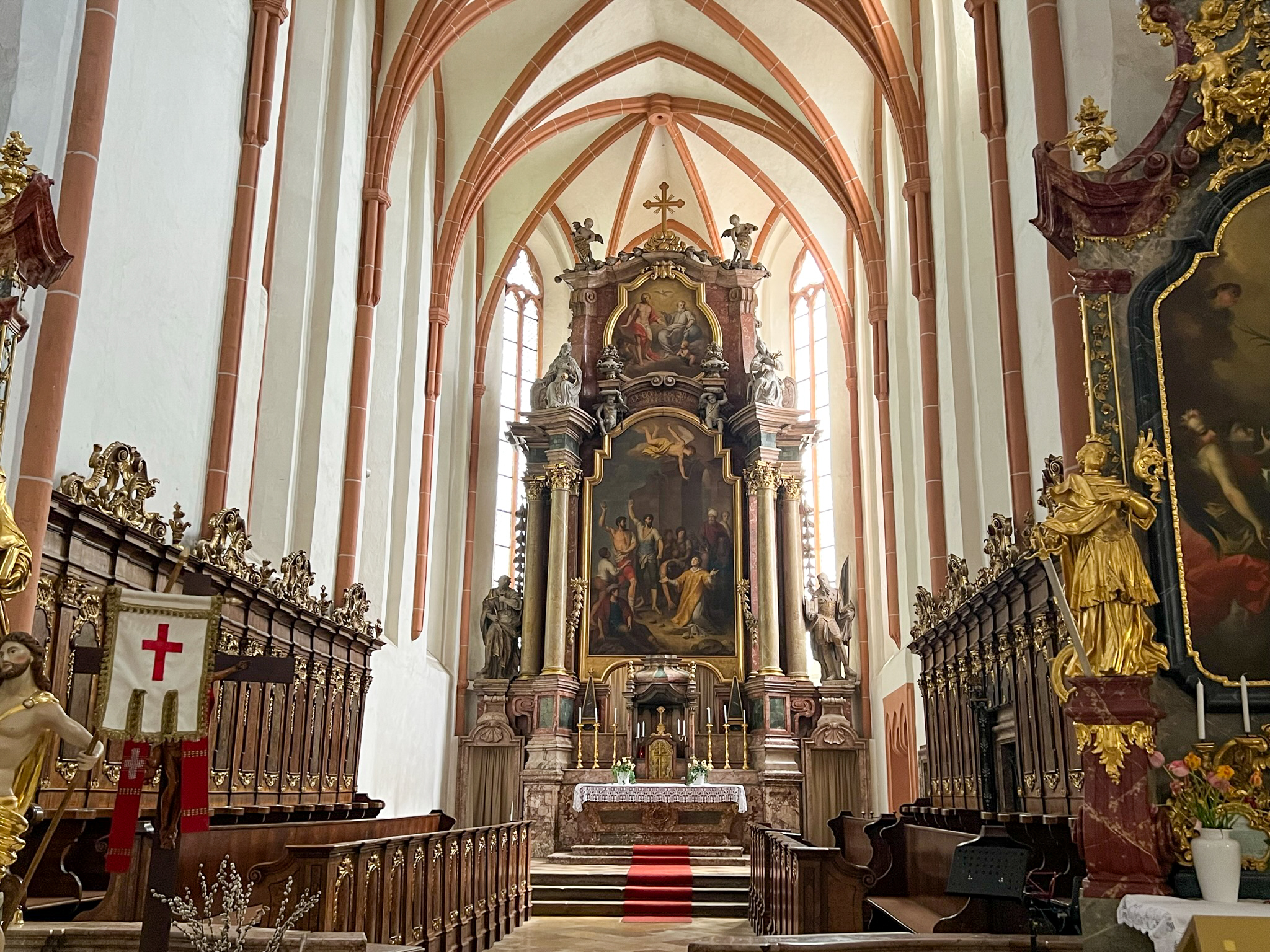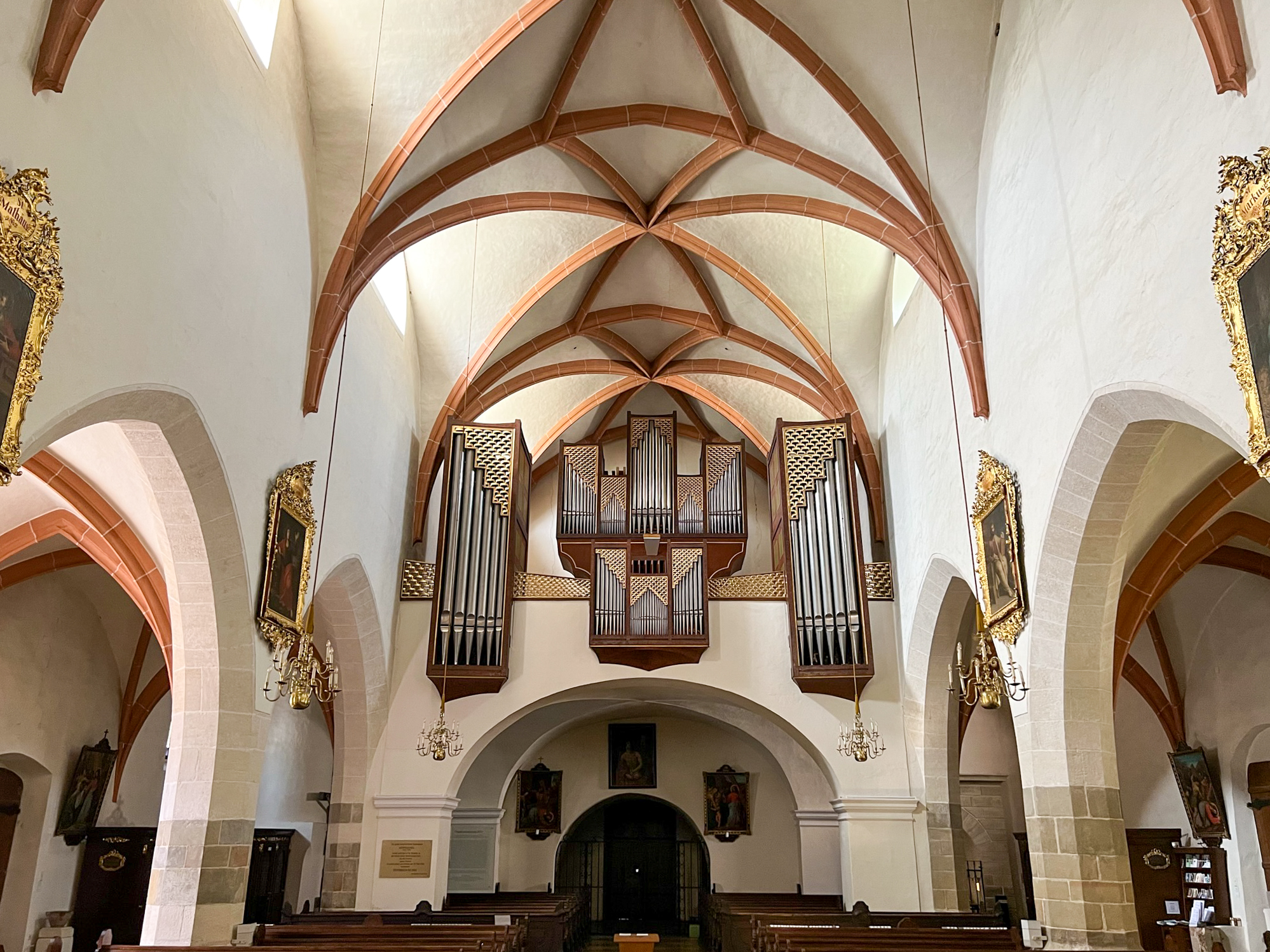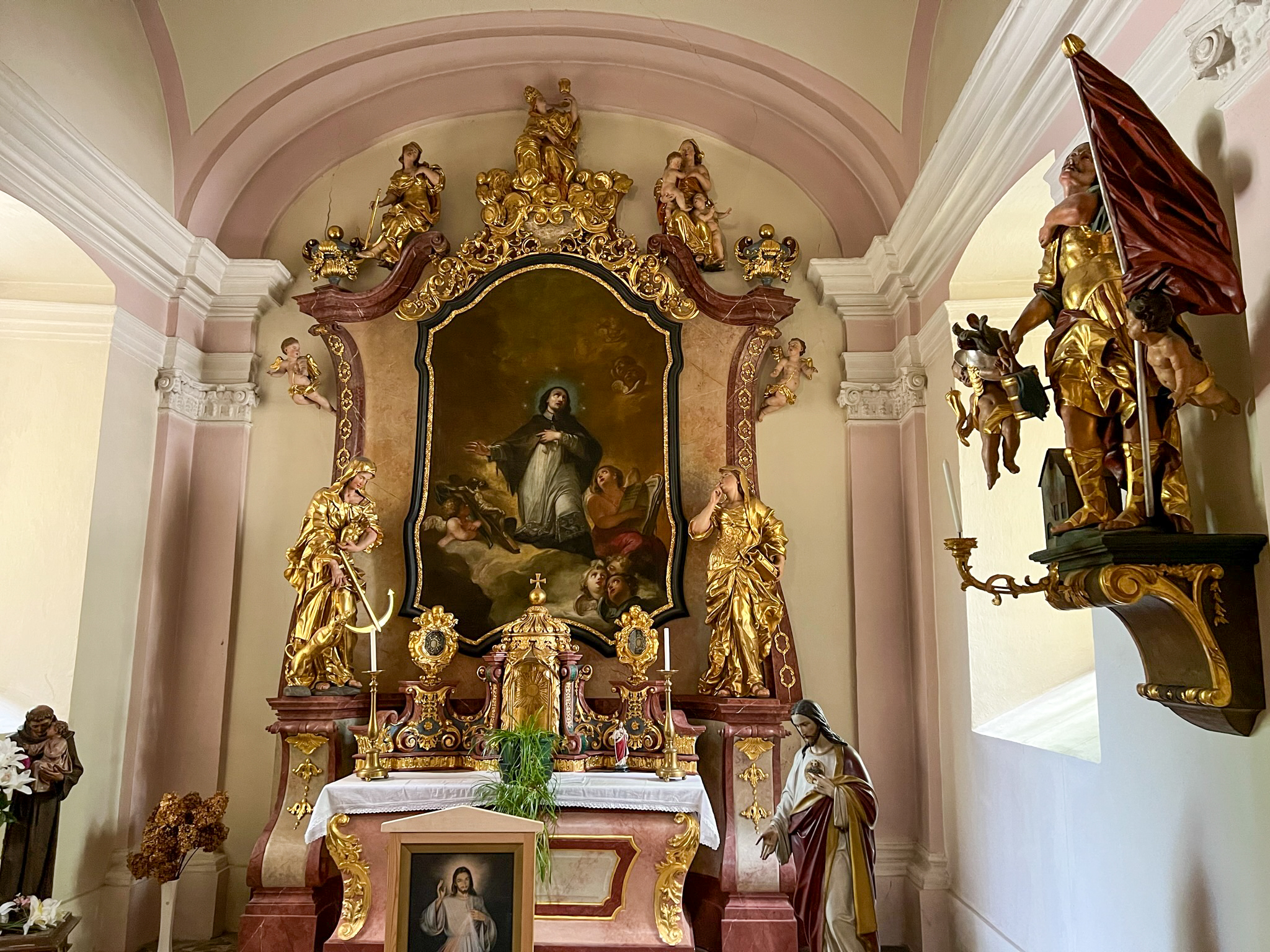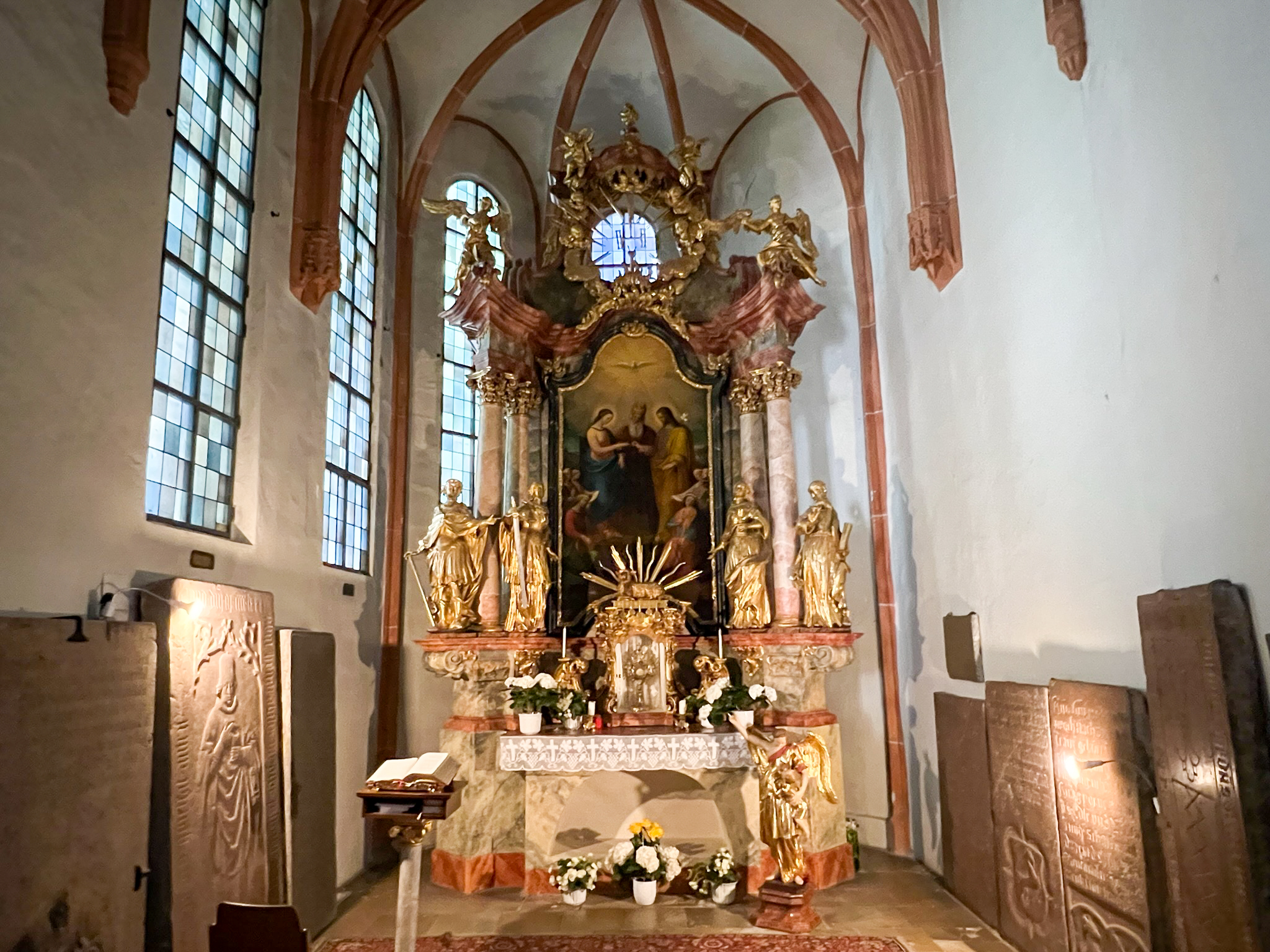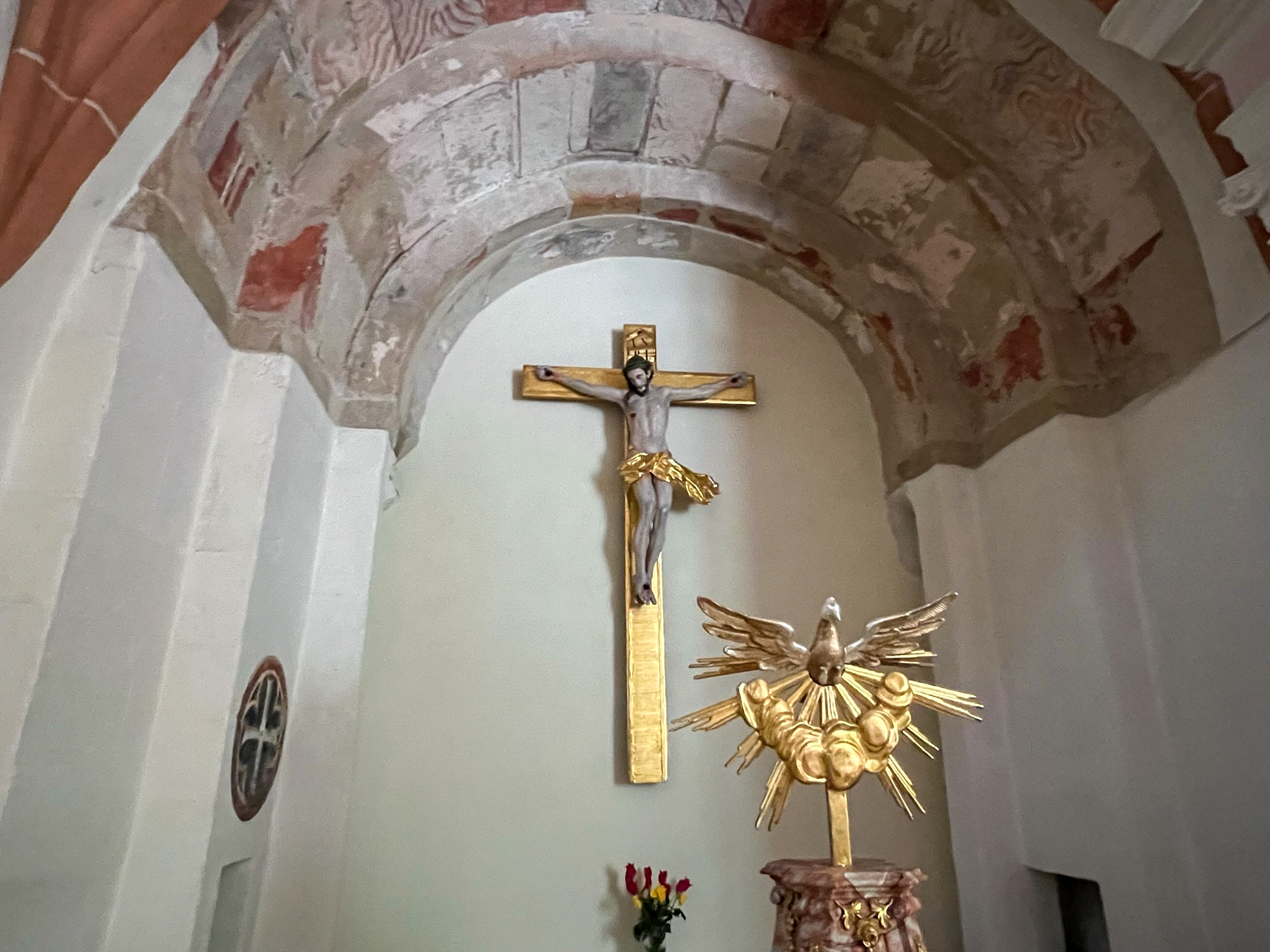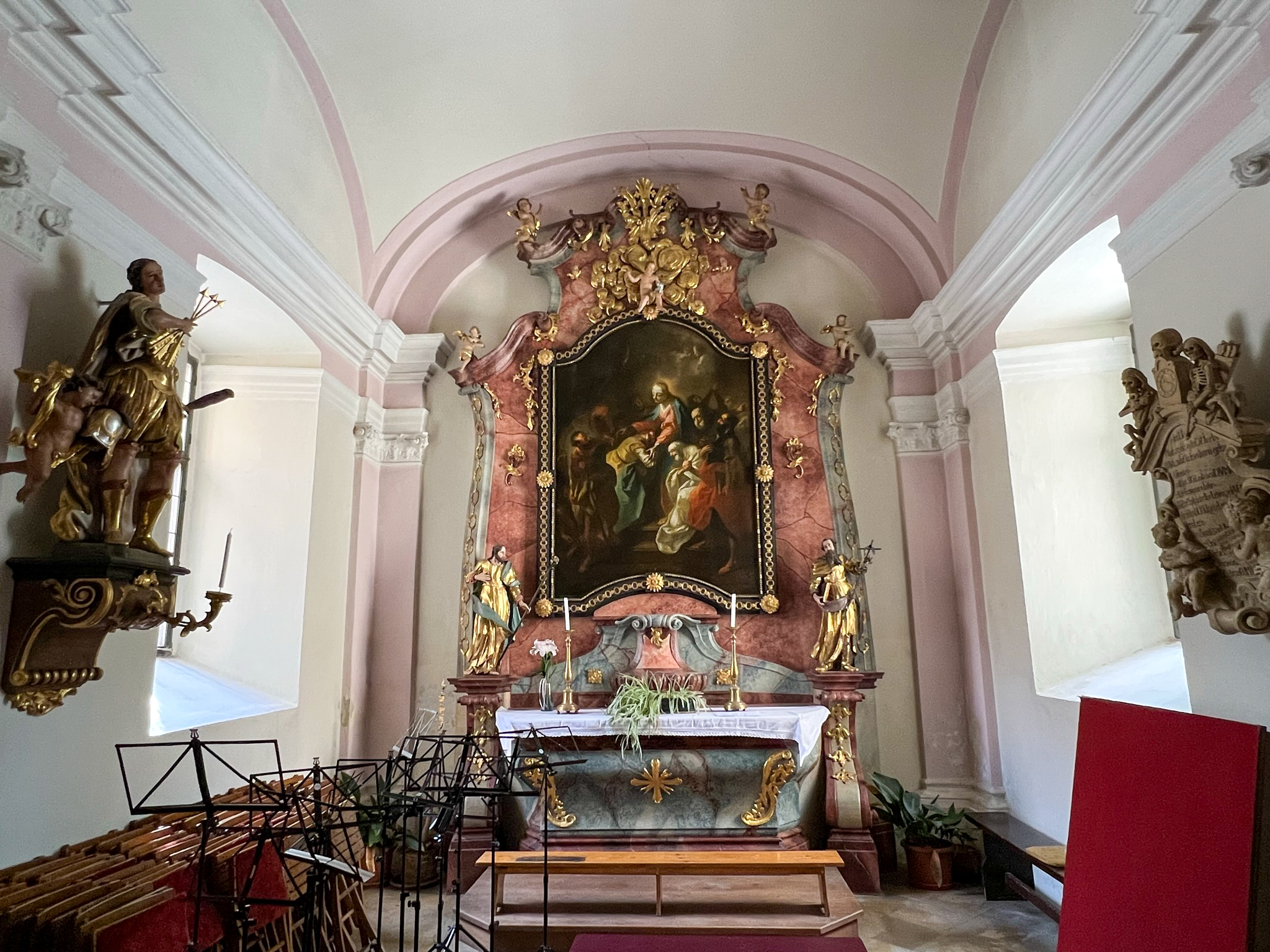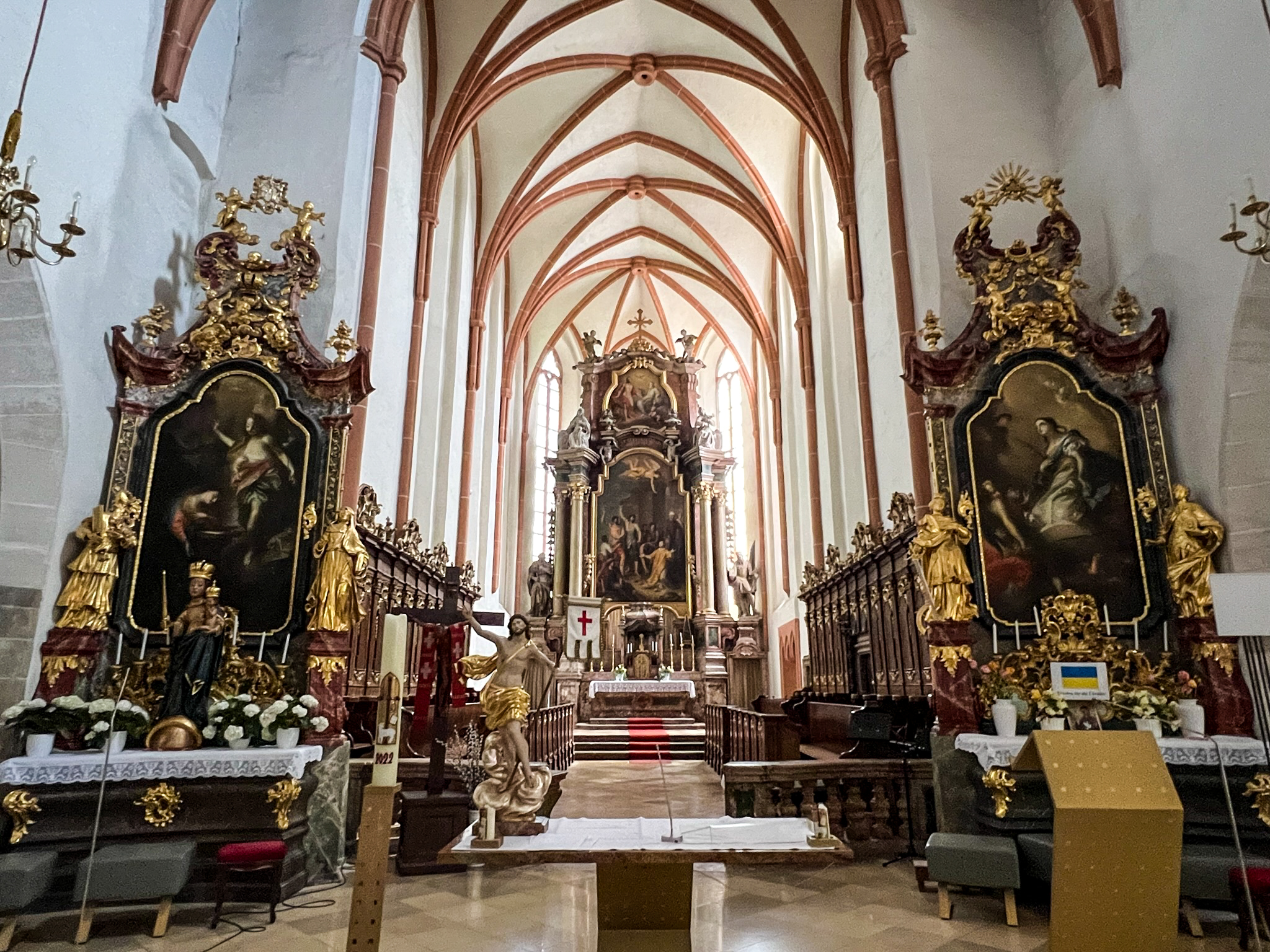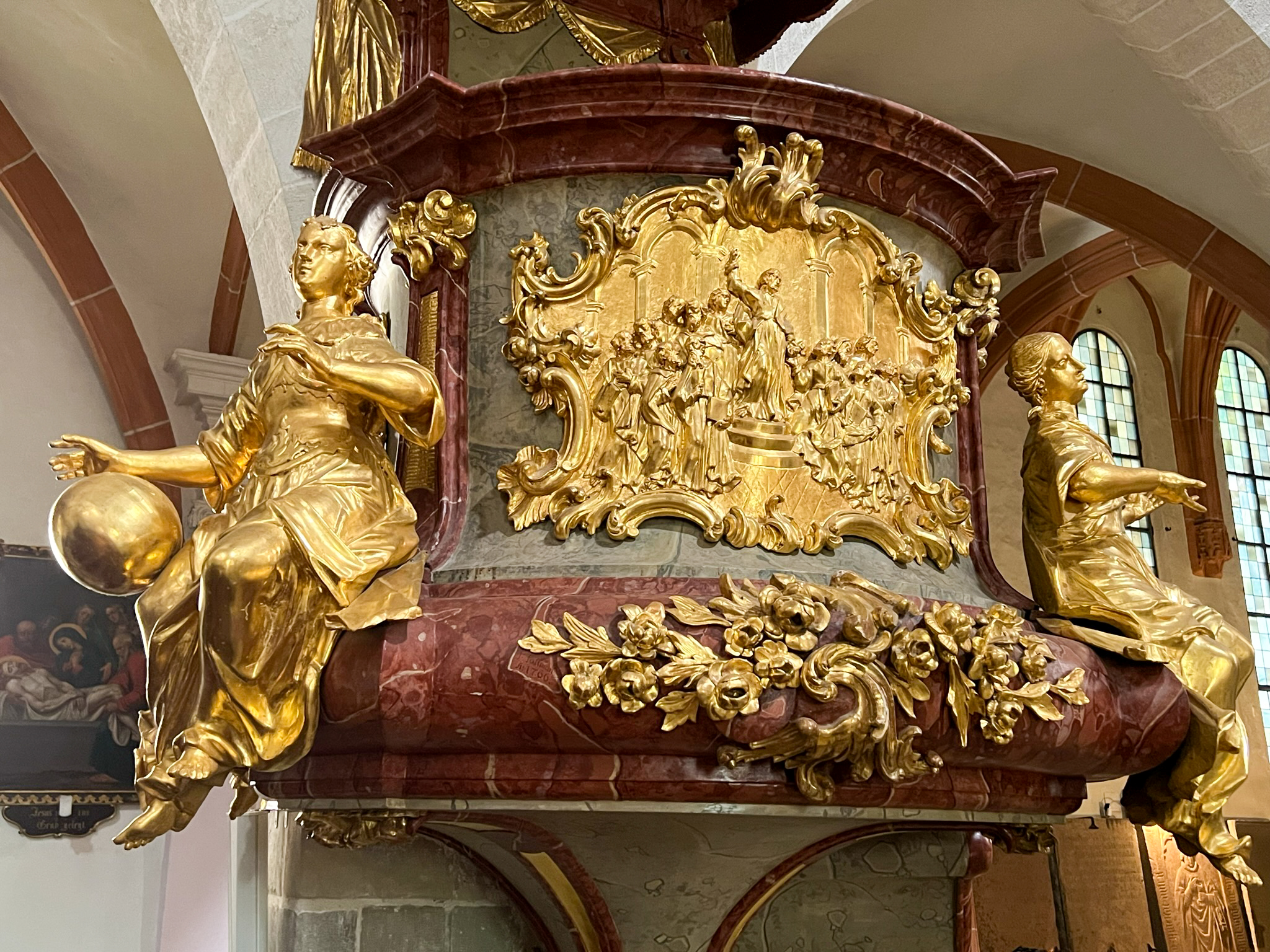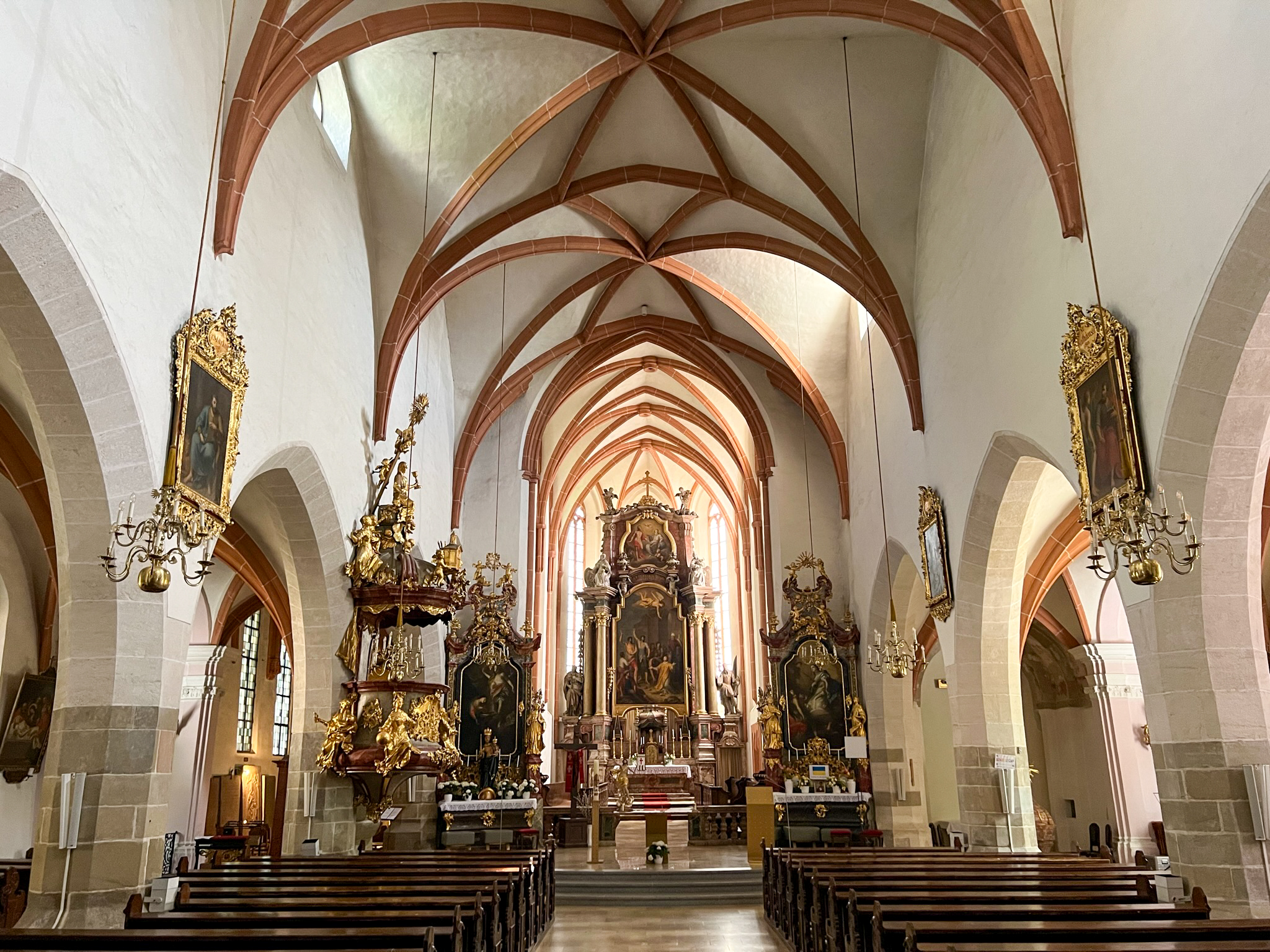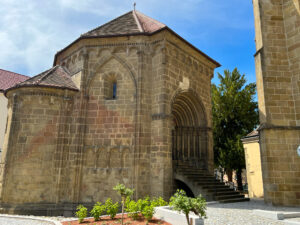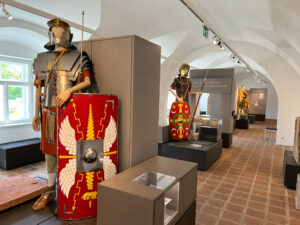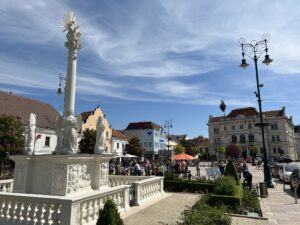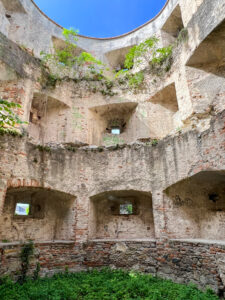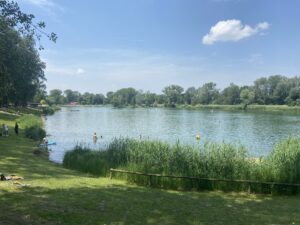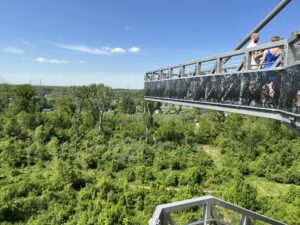Brief information:
- Where is the Parish Church of St.Stephan? In the center of Tulln, Wiener Strasse 20
- What are the highlights? The high altar, the Apostles’ Gate, the choir stalls
- Is there an entrance fee? No
- Opening hours? Mon-Fri 8am-7pm, Sat 8am-8pm and Sun 8am-6pm
The origins of the Parish Church Tulln date back to the 11th century, more precisely to July 1014. Emperor Henry II gave royal property to the Bishopric of Passau to build the church. In the 12th century, the two side aisles were added, creating the current appearance of the three-aisled pillar basilica.
The two mighty towers of the Tulln parish church, 49 metres high, dominate the cityscape of TullnThe south tower belongs to the parish, but the north tower is owned by the municipality
The Church unites several architectural styles in itself: An Ottonian-Romanesque core is contrasted with a Gothic choir and Baroque towers and Baroque interior. The Romanesque west portal, the so-called Apostles' Gate, is steeped in history. The marble altar and the magnificent choir stalls are also definitely worth seeing.
Around 1280/90 the Nave rebuilt. After the six-bay Romanesque building, it is now built with five bays in the early Gothic style of the mendicant order churches: Widely spanning Gothic pointed arches on octagonal pillars without capitals form the arcades to the side aisles.
Made of marble, the High altar originates from the Carmelite monastery in St. Pölten, which was abolished in Josephine times, was built there in 1717 and finally moved to Tulln transferred.
The two side altars date from the second half of the 18th century.
The organ, which has 37 registers, was built between 1958 and 1960 by the Upper Austrian Organ Building Institute in St. Florian.
The Bell ''Pummerin'' hangs alone in the north tower, all other bells hang in the south tower. During the First World War, the old half-pummer and two small bells had to be handed over for metal extraction and were melted down. During the Second World War, all bells had to be handed over, but were kept in the collection camp and returned after the war. However, the ringing was not initially supplemented.
In 2014, St. Stephan celebrated its 1000th anniversary and had three new bells cast for this occasion in the Rudolf Perner foundry in Passau.
Tip: Just behind the parish church is the Tullner Karner, which formerly served as an ossuary and chapel.

